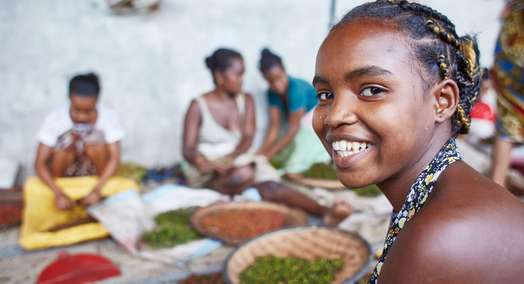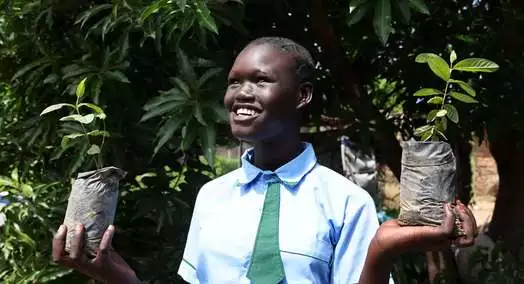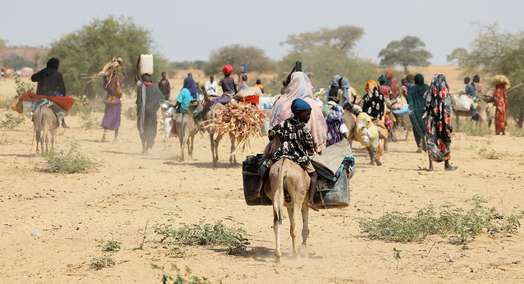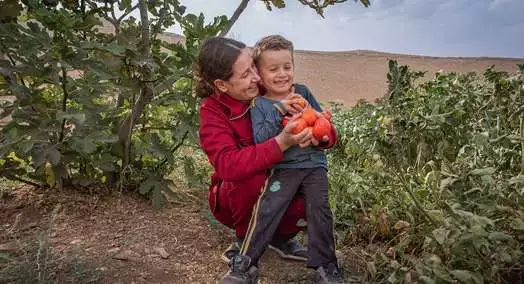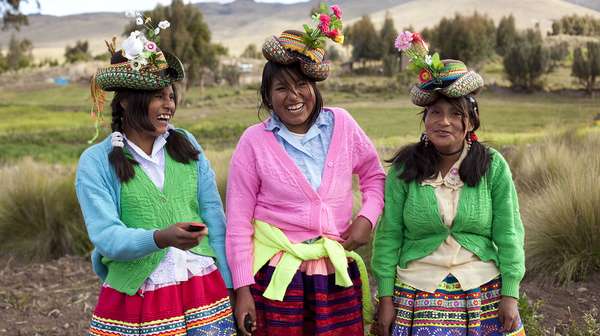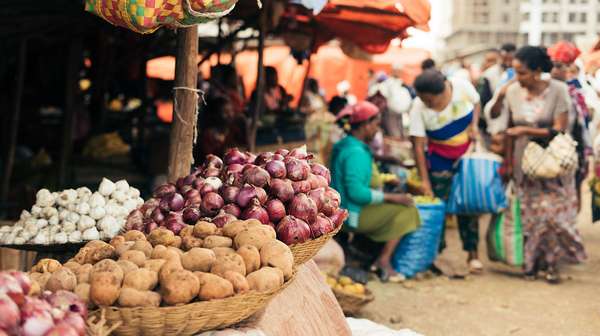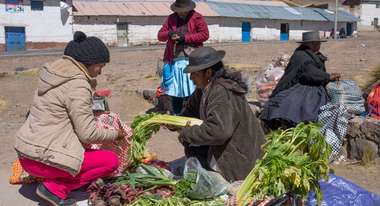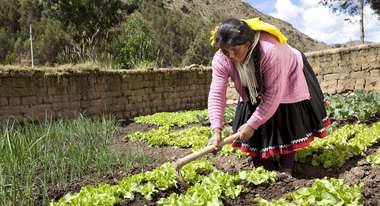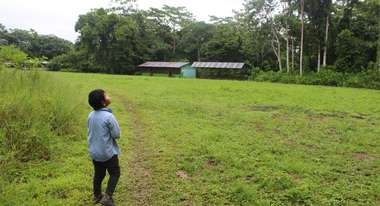Indigenous communities and poor families in Peru feel little of the economic boom of recent years. They suffer from malnutrition and have no secure access to water, electricity or basic sanitation.
Healthy, Sustainable Food For All
In a world of plenty, there are still over 800 million people suffering from hunger. This is unacceptable, because we have enough food for everyone. The September 2021 UN Summit on Food Systems examined the causes and contexts of hunger and is seeking solutions to overcome it permanently. Welthungerhilfe is on board. The organization has been fighting for the human right to food for a long time – for example in Peru.
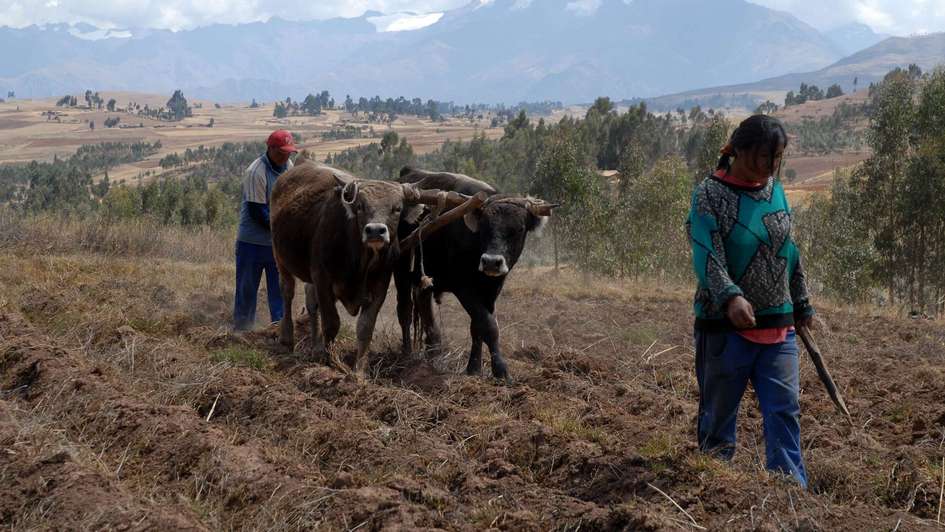
Lucia Inga Tapia’s sales crate is full to the brim with big, fat luscious avocados. The Peruvian smallholder’s green fruits weigh almost three times as much as the export goods found on German supermarket shelves. This is no surprise, as Lucia Tapia’s home village of Pacapuchuro, on the eastern slopes of the Huánuco region of the Andes, offers ideal conditions for growing tropical fruit. At an altitude of around 1,800 meters, avocado, mango and guava trees thrive, along with bananas, coffee, corn, beans and, of course, more than a dozen varieties of potatoes, the “gold of the Andes” – all for local consumption.
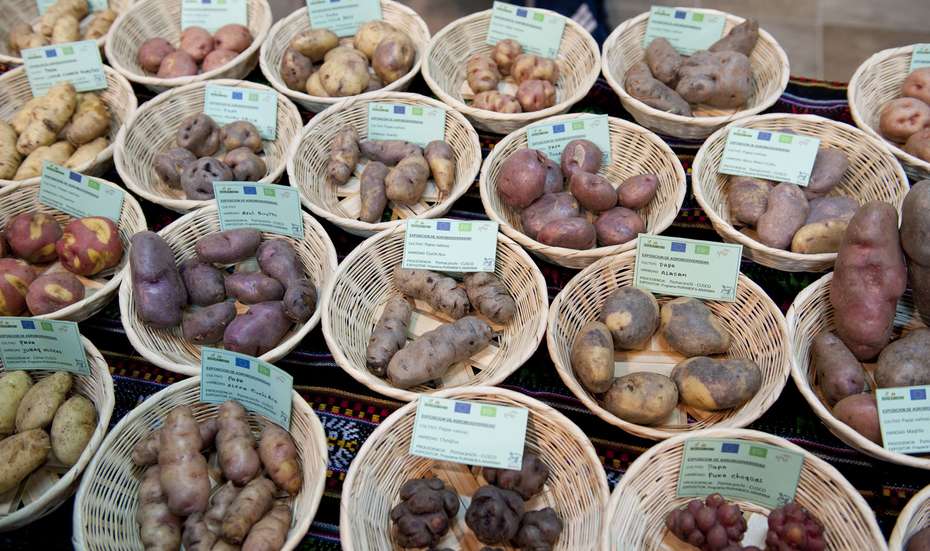
Organic farming for more yield
The house of Lucia Inga and her family has mud-walls, on the roof a Peruvian flag is flapping in the wind. The family built up their small farm with their own hard labor but never thought of growing different types of fruit, vegetables, cereals and legumes before. Their hardship was mainly based on the fact that Lucia Inga Tapia and her mother Idelberta, like most families in the region, kept only a little bit for themselves, growing mostly white potatoes, which they sold to middlemen. This meant meager profits, which were barely enough to survive on. Their situation changed when the two women participated in training courses that Welthungerhilfe and its partner organization IDMA (Instituto de Desarrollo y Medio Ambiente) organized. They switched to organic farming, growing more varieties and farming differently now. “We grow crops without chemical fertilizers or pesticides. The project has helped us get our products certified and sell them directly to customers at good prices,” says Lucia Inga Tapia. In the meantime, the energetic 30-yearold is herself advising neighboring smallholders on organic farming, because word is getting around and others are following suit.
Between hunger and obesity
In 2019, nearly 48 million people across Latin America were affected by hunger. By 2030, that number is projected to reach nearly 67 million – not yet including the devastating impact of COVID-19. Latin America and the Caribbean are the regions of the world where food insecurity is rising faster than anywhere else. Availability of- and access to food are declining even faster than in Africa. The World Hunger Index documents how serious the situation is, showing Latin America ranking among such countries as Myanmar or Malawi. This also applies to the agricultural region of Huánuco: Despite fertile soils and an enormous biodiversity, one in three people here lives in poverty. One in four children under the age of five suffers from chronic malnutrition, and almost 13 percent of all young children suffer from anemia. This is somewhat grotesque, because in Peru and throughout Latin America, obesity and related diseases such as diabetes are also on the rise. Cheap processed foods rich in fats, sugar and carbohydrates are to blame for this trend; in Peru, a large proportion of the population is overweight. What we observe in the industrial world has spread to Latin America as well:
People no longer consume diverse, seasonal produce that grows locally, but turn to inexpensive and processed imported goods instead. Rather than the perhaps shriveled but nutritious Andean potatoes, more and more Peruvians are eating industrially produced French fries, which often come from far away wealthy countries such as Belgium. Rather than corn products, they now eat white bread and pizza; instead of fresh water and juices, they drink sugary sodas.
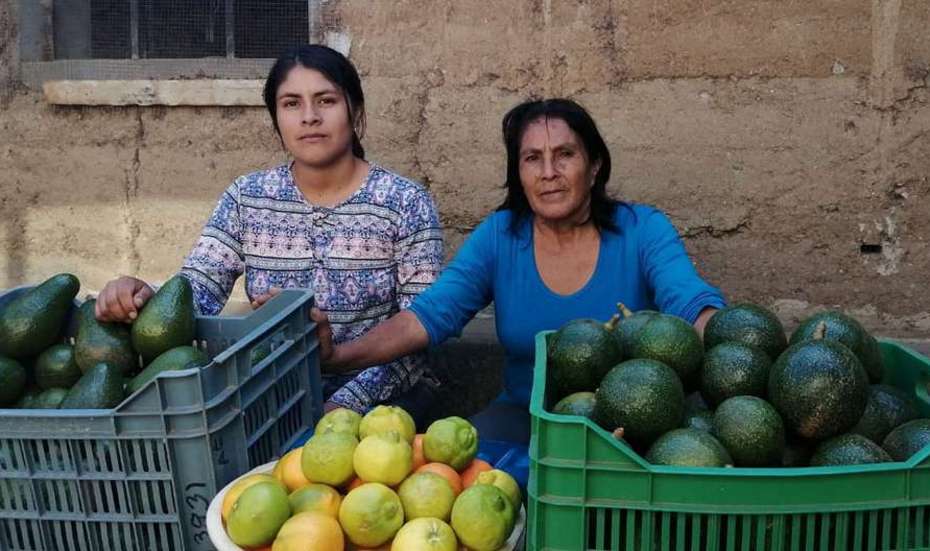
Export worsens the situation
And while large agricultural corporations use the coastal area to produce trendy superfoods such as avocados, green asparagus and grapes for export to Germany, China or the USA, fewer and fewer Peruvian families are able to feed themselves sufficiently and healthily. Since the Peruvian Pacific coast is normally far too dry for the cultivation of export goods and not nearly as suitable as the area of the Tapia family farm, natural water resources from the Andes are diverted to the coast via reservoirs and canals. Rivers and groundwater are also siphoned off for irrigation of the vast monoculture landscapes. As a result, the water table is falling, the soil is turning saline, the Andean region is drying up, and small farming families are becoming even more impoverished. A state of water emergency has had to be declared on several occasions. Add to this the harmful use of large quantities of agrochemicals, and you get the complex and familiar problems that are well known from vegetable cultivation on the Spanish Mediterranean coast, strawberry plantations in California or intensive mass animal farming in Germany.
Our food system needs to be overhauled from the ground up, as rising hunger numbers show that it is neither equitable, sustainable, nor crisis-proof.
To counteract this imbalance in the global food system, Welthungerhilfe is busy on many levels and in many ways: In projects like the one in Peru, we work with our partners to strengthen small-scale, ecological agriculture, laying the groundwork for a change in the way producers and consumers interact and for new ways of local distribution. We promote civil society organizations and their networking so that they can demand their human right to food. We hold regional and national governments accountable for them to actually implement these rights. And we are achieving initial successes: Peru now has a legal framework that promotes the sustainable production of healthy food. This now also includes certification procedures for official organic labels.
Mobile markets in times of Corona
Also in Huánuco, Peru, change has arrived. Lucia Inga Tapia is one of six organic farmers organized in her village of Pacapuchuro, and 520 families in the Huánuco region are already participating. “On our farm, we have everything we need to live,” says the young woman. She sells her healthy produce at the market in the town of Huánuco. People have started to appreciate the quality of her products and are happy to pay a little more. COVID-19 temporarily cut off this sales channel, but the enterprising businesswomen around Lucia Inga Tapia and the IDMA team quickly developed creative solutions: Via mobile markets and Whatsapp services, they supplied customers in the city directly from door to door.
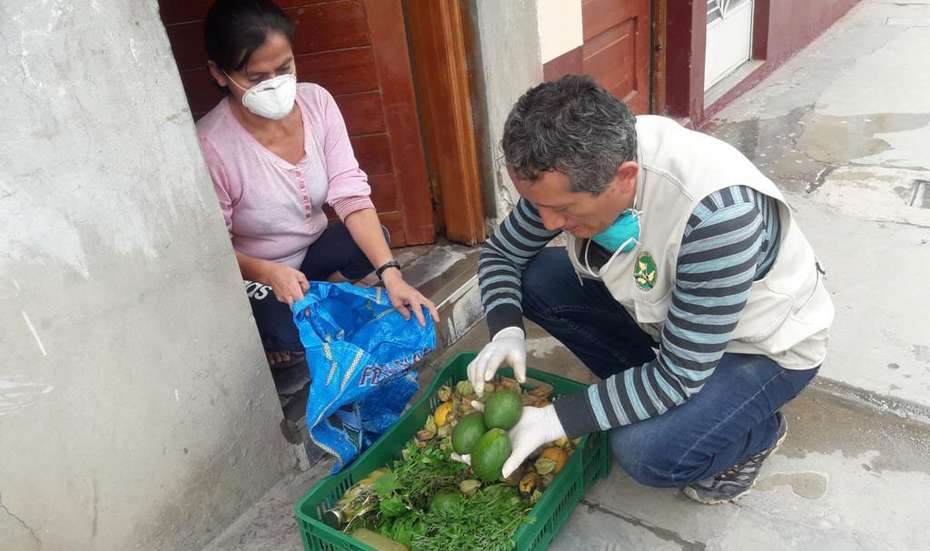
The next step is creating supply contracts for regional school meals. The government program uses the encouraging Quechua name “Quali Warma” (“healthy child”), but the nutrient-poor lunches far from compensate for the severe nutritional deficiencies of the Huánuco students. Through persistent negotiations, the organic producers and IDMA managed to succeed in getting local representatives of the Ministries of Health and Education to commit to sustainable nutrition. This includes opening kiosks with fruit, vegetables and dairy products in schools and introducing local, healthy and sustainable products for school meals. By the time Lucia Inga Tapia’s three-year-old son starts school, the program will certainly be in place.
This text is taken from our magazine.
